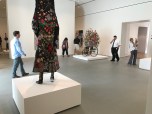Remaining useful life
Original design remaining life (ODRL) is the remaining useful life of an asset from degradation of structural capacity due to normal loading, wear and tear, deterioration, corrosion, and other related factors. It is assumed that there’s a structural safety factor (SF) of about 2.0 from the original design and that the degradation will be linear and take 100 years to reach zero capacity.
When capacity falls to 50% (to coincide with a 50-year life span) or the SF becomes 1.0, the reservoir will be considered unable to serve its original intent. It has reached the end of original design life (EODL).
The point in its life at which a structure is assessed is designated as T1. ODRL = 50 minus T1 (see Original Design Remaining Life graph in slideshow).
The asset’s remaining capacity is a composite of the remaining capacities of its various structural components multiplied by its relative importance to the overall system. The beauty of the system is that the assessor decides how much weight to assign to each component.
Projecting the end of asset life (TS, for shorter than expected, or TL for longer than expected) will be based on the same linear projection as ODRL.
The assessed condition remaining life (ACRL) will be the difference between TS and T1, or TL and T1. Depending on the asset’s condition at age T1, ACRL can be shorter or longer than ODRL.
RUL is calculated using this formula: 10% x (50 minus T1) + 90% of (TL minus T1) or (TS minus T1).
The ACRL algorithm allows PUD managers to identify current and future infrastructure needs to determine the most cost-effective improvement approach. If rehabilitating an existing clarifier will cost more than building a new one, replacing the asset is more financially prudent.
They are also in a stronger position to address permit requirements. By comparing the total rehabilitation cost across all assets, they’re able to avoid unplanned crises, such as catastrophic failure, and the high cost of responding to unanticipated failures.
Simon Wong, PE, is the vice president of business development at Kleinfelder; e-mail swong@kleinfelder.com. Eric Rubalcava, PE, MPA, is a senior civil engineer with the EPM Division of the City of San Diego’s Public Utilities Department. E-mail ERubalcava@sandiego.gov.
More from Concrete Construction Magazine
-
Concrete Flooring Contractor Exceeds Expectations in $100 Million Museum Restoration/Expansion
Brought to you by CTS3 MIN READ
-
St. Pete Pier, St. Petersburg, Fla.
3 MIN READ
-
Puffy Bricks
1 MIN READ



